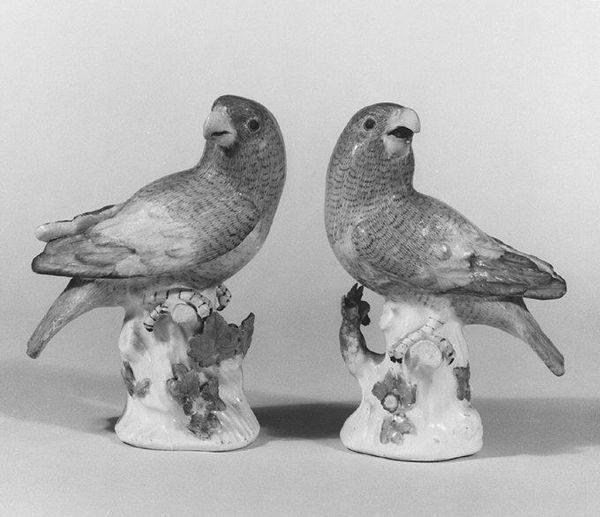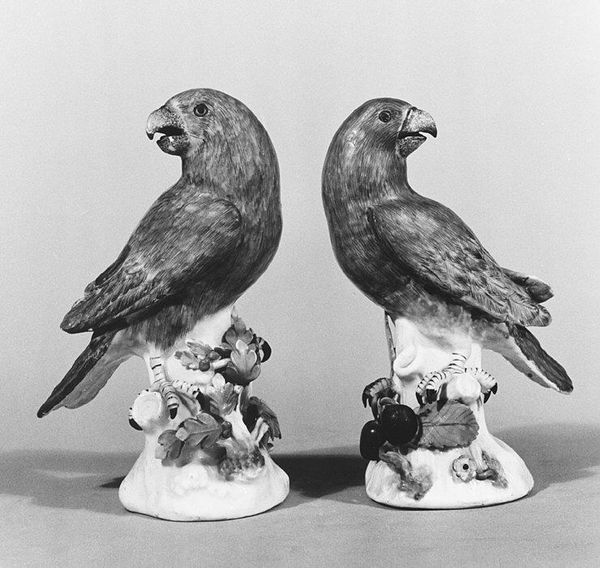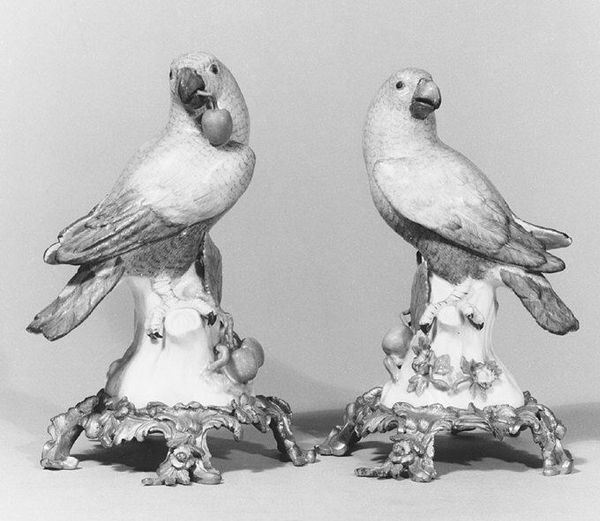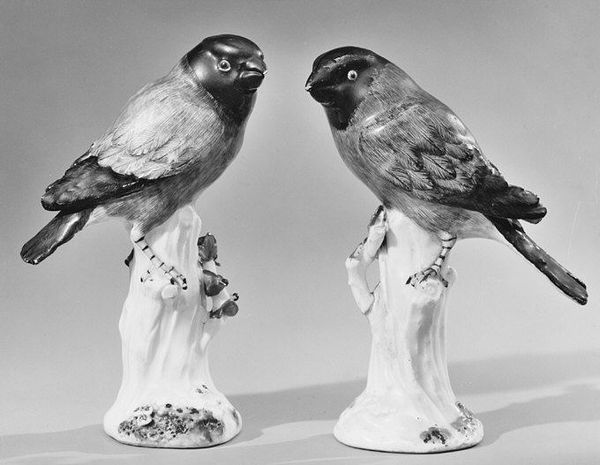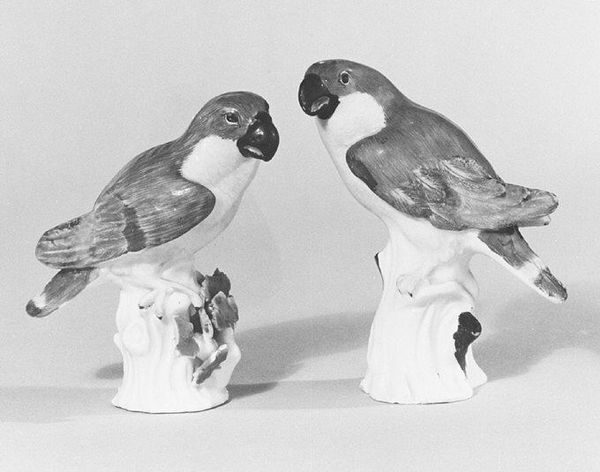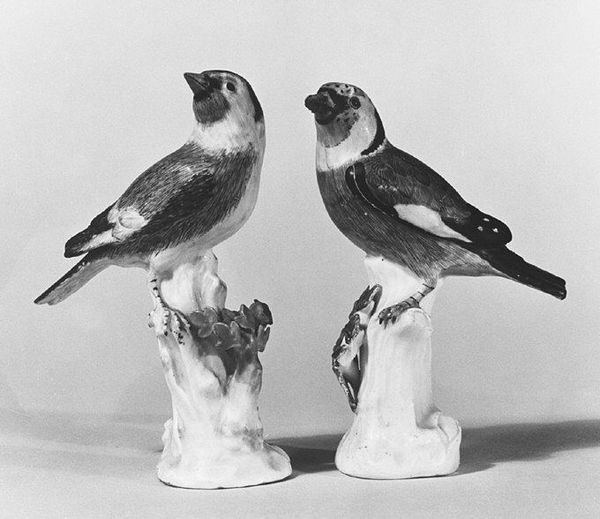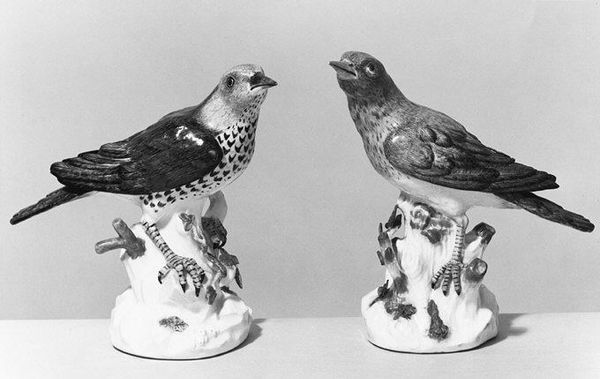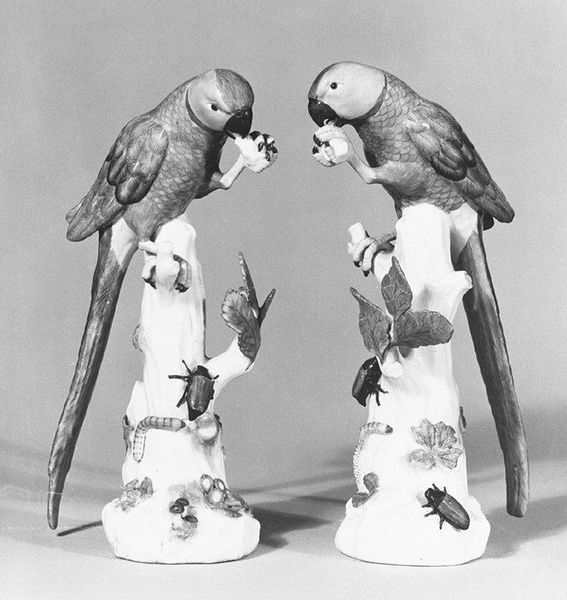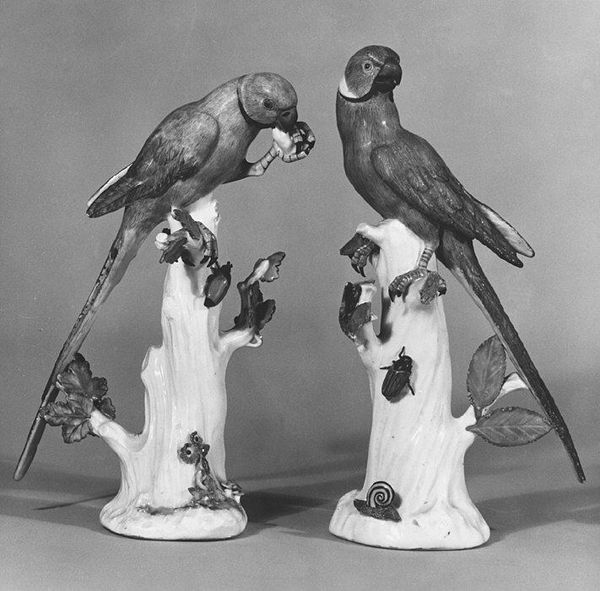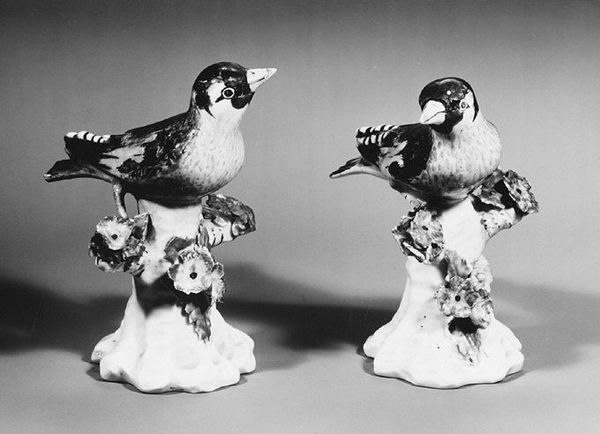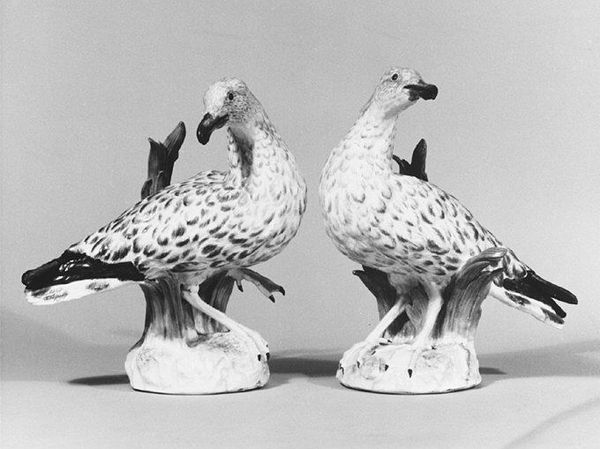
ceramic, porcelain, sculpture
#
sculpture
#
ceramic
#
porcelain
#
sculpture
#
decorative-art
Dimensions: Height: 7 7/8 in. (20 cm)
Copyright: Public Domain
Curator: Let’s turn our attention to these charming porcelain sculptures. Made around 1740 by the Meissen Manufactory, this piece is titled "Parrot (one of a pair)." It resides here at the Metropolitan Museum of Art. What's your initial take? Editor: My first thought is how smooth they are. Porcelain gives such a delicate, almost luminous quality. And I'm struck by how meticulously the form and texture have been captured here in such a potentially brittle material. Curator: Indeed. The parrot, as a symbol, was highly fashionable in the 18th century, often associated with wealth and global trade due to its exotic origins. Their presence in aristocratic homes was both a display of status and an acknowledgement of global connections. Editor: And Meissen porcelain itself became a symbol, didn't it? I’m thinking of all the intense labor that goes into extracting kaolin, then processing it just so for a select clientele to consume. Curator: Precisely. Meissen gained prestige as the first to master hard-paste porcelain outside of China. These parrots weren't just decorative; they signaled the owner’s sophisticated taste, knowledge of artisanal skills, and, frankly, buying power. It became closely associated with the aspirations of the Saxon court. Editor: These pieces become commodities—symbols of an intense industrial effort on the part of many hands and the exclusive ownership and connoisseurship on the part of a very few individuals. Curator: You bring up an excellent point about craftsmanship. The creation process, involving modeling, molding, firing, and hand-painting, was intensely collaborative within the Manufactory. We must remember it wasn't simply about individual skill, but rather a complex collective production under the patronage of the elite. Editor: Exactly. Examining such pieces shifts art history’s focus onto processes and conditions rather than exclusively focusing on individual creators. Curator: It highlights the critical roles of production centers in Europe during a specific social environment. Thanks for unpacking this artwork’s rich social history with me, especially as relates to class dynamics. Editor: Thank you. Thinking through how artistry and society meet always adds an important dimension to any object we find in a museum.
Comments
No comments
Be the first to comment and join the conversation on the ultimate creative platform.
